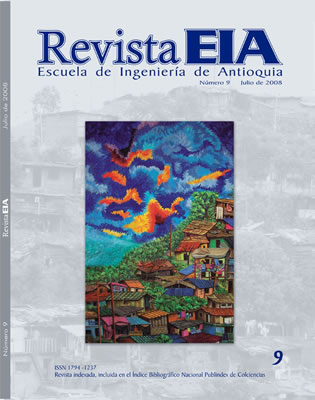MARCADO CON LÁSER SOBRE CERÁMICA VIDRIADA POR APORTE SUPERFICIAL DE UN PIGMENTO DE COBALTO
MARCADO CON LÁSER SOBRE CERÁMICA VIDRIADA POR APORTE SUPERFICIAL DE UN PIGMENTO DE COBALTO


This work is licensed under a Creative Commons Attribution-NonCommercial-NoDerivatives 4.0 International License.
Copyright statement
The authors exclusively assign to the Universidad EIA, with the power to assign to third parties, all the exploitation rights that derive from the works that are accepted for publication in the Revista EIA, as well as in any product derived from it and, in in particular, those of reproduction, distribution, public communication (including interactive making available) and transformation (including adaptation, modification and, where appropriate, translation), for all types of exploitation (by way of example and not limitation : in paper, electronic, online, computer or audiovisual format, as well as in any other format, even for promotional or advertising purposes and / or for the production of derivative products), for a worldwide territorial scope and for the entire duration of the rights provided for in the current published text of the Intellectual Property Law. This assignment will be made by the authors without the right to any type of remuneration or compensation.
Consequently, the author may not publish or disseminate the works that are selected for publication in the Revista EIA, neither totally nor partially, nor authorize their publication to third parties, without the prior express authorization, requested and granted in writing, from the Univeridad EIA.
Show authors biography
El procesamiento de materiales por láser tiene gran aplicación a escala industrial, para imprimir patrones gráficos sobre superficies cerámicas. La rápida implementación de este proceso se debe a que, respecto al proceso convencional de horneado, tiene ventajas tales como: se concentra el calor sólo en la zona irradiada, lo que conlleva un menor consumo de energía sin afectar significativamente el resto de la pieza; se obtienen patrones gráficos de alta resolución espacial; permite introducir cambios durante el proceso sin requerir largas paradas, y la generación de residuos es mínima o casi nula. En este estudio se presentan los resultados obtenidos en el vidriado con láser Nd:YAG (λ=1064 nm) sobre las superficies esmaltadas de azulejos, las cuales fueron previamente recubiertas con pigmento negro de cobalto. Con el láser operando en modo continuo (CW), se marcaron una serie de líneas, cuyo ancho y profundidad evidenciaron una dependencia directa con la variación de la potencia y velocidad de desplazamiento del haz láser sobre la superficie del azulejo. Estas líneas vidriadas fueron finalmente caracterizadas por microscopía óptica, espectroscopia de dispersión de energía (EDS) y difracción de rayos X.
Abstract: Laser materials processing has great application to industrial scale, to print graphic patterns on ceramics surfaces. The fast implementation of this process is due to the fact that, with respect to the conventional baking process, has advantages, such as: heat is concentrated only in the radiated zone that involves a smaller energy consumption without affecting significantly the rest of the piece, graphic patterns with of highly spatial resolution are obtained, it permits to introduce changes during the process without requiring long stops, and low or almost none generation of residues. In this study the results obtained from Nd:YAG (λ=1064 nm) laser glazing on the enameled surfaces of glazed tiles, which were previously covered with black of cobalt pigment, are presented. With the laser operating in continuous wave (CW), a series of lines were marked, whose width and depth showed a direct dependence with the variation in the power and scan speed of the laser beam on the surface of the glazed tile. Finally, these glazed lines were characterized by optical microscopy, energy dispersion spectroscopy (EDS), and X-ray diffraction (XRD).
Article visits 212 | PDF visits 125
